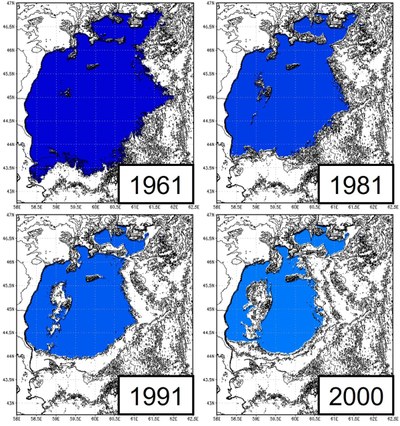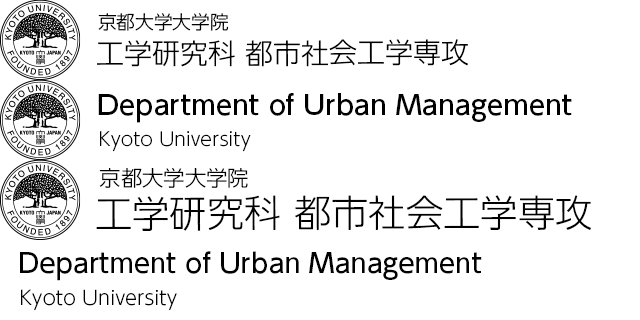Regional Water Environment Systems
Water is one of the most precious and unevenly distributed natural resources in the world. Human beings have adapted with changing natural hydrological systems and increasing water demand. Learning past experiences, we develop the concept of integrated water resources management for promoting sustainable development under socioeconomic and climate change conditions.
Laboratory Website
https://rwes.dpri.kyoto-u.ac.jp
Academic Staff
Kenji TANAKA

Professor (Disaster Prevention Research Institute)
Research Topics
A new land surface scheme SiBUC, which can treat urban area, water body, vegetation, agricultural cropland, is developed, and this LSS is coupled into various kinds of numerical weather prediction model to clarify the mechanism of energy/water cycle at global, continental, and regional scale, and to improve the ability for its prediction.
Contacts
Room S-420D, Disaster Prevention Research Institute, Uji Campus
TEL: +81-774-38-4269
E-mail: tanaka.kenji.6u![]() kyoto-u.ac.jp
kyoto-u.ac.jp
Kazuaki YOROZU

Associate Professor (Disaster Prevention Research Institute)
Research Topics
Atmosphere - land surface interaction impact on hydrologic cycle; Land surface modeling considering human activities; and Applications of land surface model for global water resources analysis.
Contacts
Room S-426D, Disaster Prevention Research Institute, Uji Campus
E-mail: yorozu![]() hywr.kuciv.kyoto-u.ac.jp
hywr.kuciv.kyoto-u.ac.jp
Yoshiya TOUGE

Program-Specific Associate Professor (Disaster Prevention Research Institute)
Research Topics
Development of hydrological evaluation method for wildfire susceptibility, Changes in hydrological process after wildfire, Water balance analysis of endorheic lake considering human activities and climate change.
Contacts
Room S-424D, Disaster Prevention Research Institute, Uji Campus
TEL: +81-774-38-4249
E-mail: touge.yoshiya.2z![]() kyoto-u.ac.jp
kyoto-u.ac.jp
Research Topics
Integrated Water Resources Management model
The "integrated water resources management model" consists of a distributed hydrological model, land surface process (LSP) model, groundwater (GW) model, water quality (WQ) model, sediment transport model, food chain model, crop growth model, reservoir operation model, socioeconomic model, etc. is being developed. This model is an integrated model which describes not only natural hydrological systems but also artificial systems such as those capable of regulating floods and releases from reservoirs in order to satisfy the demand from each sector. This model is expected to be applied to various kind of topics, such as diagnosis of the reliability of the current water resources system, decision support for water resources planning, evaluation of risks related to floods, droughts and ecosystems under future climate change, and proposal of risk reduction and adaptation measures to the anticipated impact from climate change.

Figure-1 Structure of integrated water resources management model

Figure-2 Energy balance observation on glacier in Kyrgyz
Climate Change Impacts on Water Resources
Global warming may change the amount and patterns of precipitation, leading to change the phase of the winter season's precipitation from snowfall to rainfall. This could cause a great change in the pattern of water flowing into rivers. We aim to assess the changes in the available water resources of the major rivers in Japan and the world considering the changes in the water requirement under future socioeconomic and climate scenarios. Also, we developed a numerical model that covers not only the natural water cycle but also the use of water resources by human activities. By using such a model, the impact of agricultural irrigation on summer precipitation on a global scale is estimated as shown in the figure-3.

Figure-3 Estimated irrigation impact on summer rainfall
Groundwater Management
Depletion of groundwater resources has become obvious in many parts of the world. Land surface model has been upgraded to monitor the groundwater storage change through recharge and groundwater withdrawal processes. Recharge rate is governed by climate, topography, geology, and land use conditions. We are investigating the strategy for land and groundwater utilization toward sustainable water resources management.

Figure-4 Global distribution of agricultural water requirement

Figure-5 Global distribution of future change in agricultural water requirement (future/present)
Water balance in the endorheic lake basins
Endorheic lakes are closed inland lakes that have no outflowing rivers, maintaining their area through the balance between inflow from rivers and evaporation from the lake surface. They are sensitive to climate change and human water usage within the basin. We are developing an endorheic lake model targeting the Aral Sea, based on an integrated water resources management model.

Figure-6 Reproduced historical change of the Aral Sea from 1960 to 2000 considering agricultural water consumption in the basin
